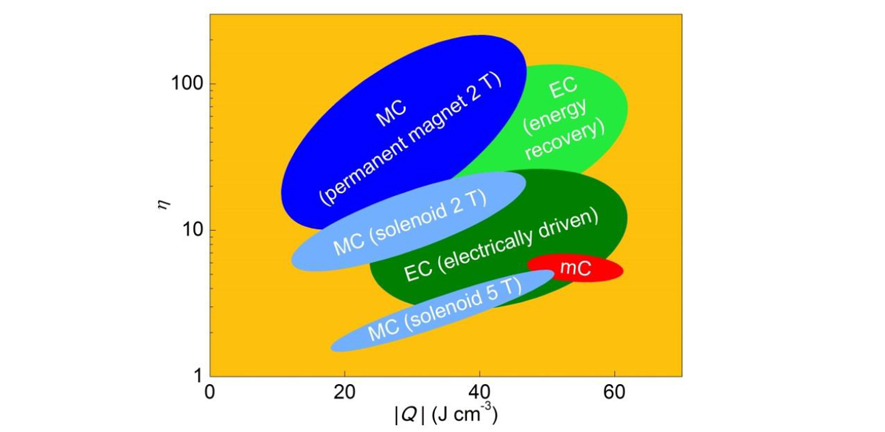
Banner image: Energy efficiency η (described as the heat transferred Q divided by the external work W) for electrocaloric (EC), magnetocaloric (MC) and mechanocaloric (mC) effects. [After Nature Physics 11 (2015) 202].
Electrocalorics
Applying a voltage across a ferroelectric material can switch ferroelectric domains below the Curie temperature, but near the Curie temperature an applied voltage can drive the ferroelectric phase transition itself. Driving and undriving such phase transitions produces large thermal changes known as electrocaloric effects, and these could be exploited for low‑power cooling applications. Here we study a range of electrocaloric materials, using a range of measurement protocols, in this rapidly growing area.
